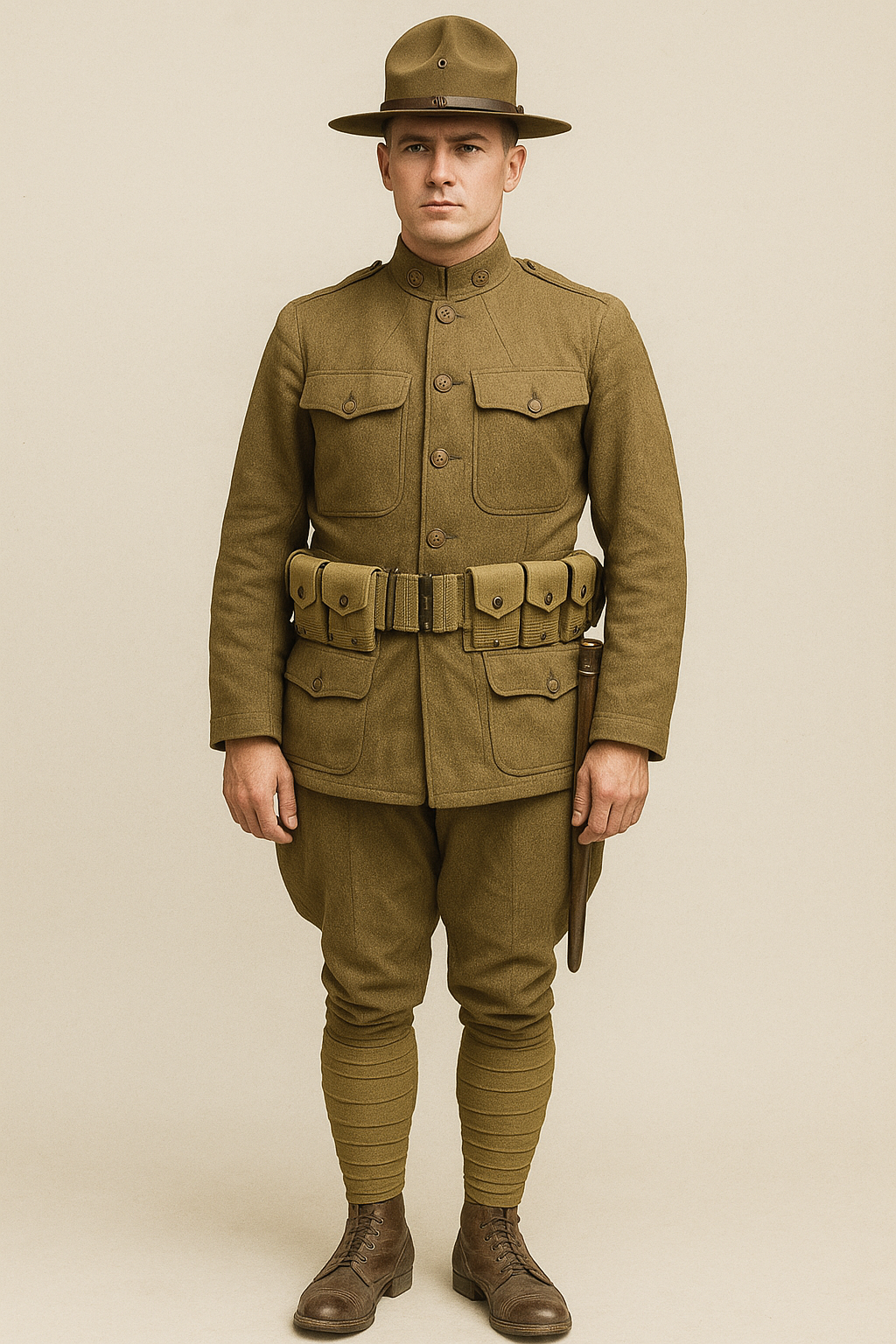
WWI U.S. Army Uniform Regulations: A Complete Army Uniform Guide with HBT & NSU Insights
Published on Jun 19, 2025
WWI U.S. Army Uniform Regulations: A Detailed Guide for Enthusiasts and Collectors
World War I marked a turning point not only in warfare but in military presentation and regulation. As American forces joined the Great War, the U.S. Army issued strict guidelines for uniforms that emphasized unity, functionality, and symbolism. These regulations helped define the visual identity of soldiers and continue to influence modern reenactments and military collecting today.
1. Overview: Why Uniform Regulations Were Critical in WWI
WWI was the first large-scale international conflict involving millions of troops across multiple continents. The U.S. Army needed a consistent appearance for practical reasons—camouflage, identification, and chain of command visibility. Uniform regulations ensured soldiers were properly outfitted for both combat and formal military functions.
2. Key Elements of the Standard WWI Army Uniform
Service Coat (M1912 & M1917 Versions):
- Olive drab wool (Color No. 33)
- Standing collar in earlier designs; notched lapel in later models
- Four-button or five-button front closure
- Brass buttons with U.S. insignia
- Shoulder straps (epaulets) for rank placement
Shirts and Undergarments:
- Flannel wool undershirts in brown or olive tones
- Cotton drawers and undershirts were common for warmer months
Trousers:
- Straight-legged wool trousers with reinforced seams
- Button fly and suspender buttons; belts added in late designs
Footwear and Gaiters:
- Trench boots or “Pershing boots” made of durable leather
- Canvas gaiters or leggings to protect lower legs from mud and debris
3. The Roots of the WW2 HBT Uniform in WWI Fatigues
Though the WW2 HBT uniform is iconic today, its roots lie in WWI fatigue clothing. Early “working dress” featured cotton twill, sometimes with a faint herringbone pattern.
Key Characteristics of Early HBT-Style Uniforms:
- Durable cotton or denim for fatigue duty
- Jacket and trousers for manual labor
- Often undyed or natural tan fabric
- Pocket-less or single-pocket designs for simplicity
These work uniforms evolved into the fully integrated WW2 HBT uniforms, but their practical design emerged on the fields of WWI.
4. Accessories and Equipment: Completing the Regulation Look
Belts and Web Gear:
- M1910 cartridge belt
- Bayonet scabbard with leather frog
- Canteen, first aid pouch, and entrenching tool
Helmets and Caps:
- Campaign hat (Montana peak) early in the war
- M1917 steel helmet (similar to British Brodie) adopted mid-war
- Overseas cap for non-combat or return service
Rank and Branch Insignia:
- Collar discs with U.S. and branch symbols
- Chevrons for NCOs on sleeves
- Colored piping to indicate branch (infantry, artillery, etc.)
5. Understanding the Navy NSU Cover in a WWI Army Context
While primarily used by naval personnel, the Navy Service Uniform (NSU) cover occasionally appeared in shared duty posts or training environments involving both Navy and Army members.
Identifying Features of an NSU Cover:
- Navy blue eight-point cover with soft crown
- Fitted interior band for comfort
- Front insignia (customizable for Army/Navy crossover use)
Why It Matters for Reenactors:
These hybrid uniform items offer a fascinating glimpse into inter-branch operations. Though rare, they represent a valid detail in historical reenactment or advanced collecting.
6. Modern Applications: Styling, Buying, and Preserving WWI Uniforms
Whether you’re reenacting the Battle of the Argonne Forest or curating a display, authenticity matters. Here’s how to maintain and source regulation-friendly WWI gear:
Buying Tips:
- Prioritize wool and cotton over synthetics
- Look for original or museum-quality reproductions
- Check seller reputation and historical references
Caring for WWI Uniforms:
- Store wool garments in breathable containers
- Use cedar chips or mothballs to prevent damage
- Brush dust off regularly with a soft horsehair brush
Styling Advice:
- Keep accessories era-specific
- Avoid mixing WW2 and WWI gear unless for comparison
- Use authentic or replica rank insignia per regulation photos
7. Conclusion: Why WWI Uniform Regulations Still Matter
WWI U.S. Army uniform regulations weren’t just about fabric and function—they symbolized discipline, unity, and the emergence of America as a global military force. By understanding these guidelines, we honor the historical significance and personal sacrifice of those who served.
Whether you're preserving history through display, engaging in reenactments, or collecting for educational purposes, accuracy in your uniform choices adds meaningful depth. From the woolen warmth of a regulation M1917 service coat to the roots of the WW2 HBT uniform, every piece tells a story. Even lesser-known items like the Navy NSU cover offer a nuanced view of military history.
